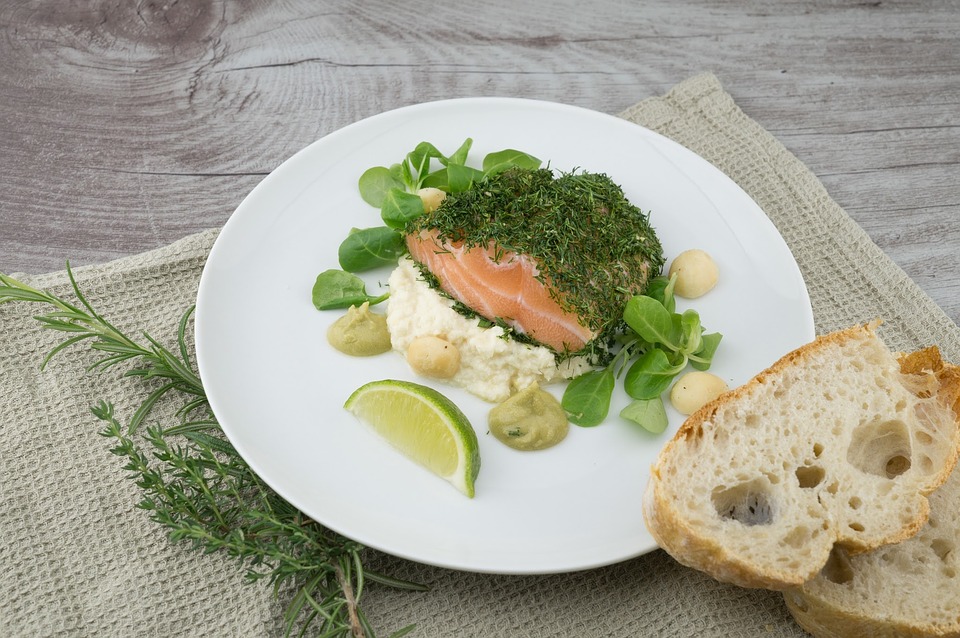Pleasant meals and meal environments
This article is written from a Swedish perspective. Hopefully, it can inspire interested individuals from other countries.
The meal is an occasion for joy and companionship and can contribute to good health. By creating pleasant meals, the risk of malnutrition and thus also the risk of fall injuries and hard-to-heal wounds is reduced. Pleasant thoughtful meals also contribute to maintaining function by creating a pleasant everyday life where the residents want to participate. This also reduces the risk of involuntary loneliness.

Pleasant meals at the nursing home
Meals play a central role in the lives of older people, and creating enjoyable meal experiences at nursing homes is of great importance for the residents' well-being. It's not just about satisfying hunger, but also about promoting social interaction, health and quality of life. Here are some important aspects to consider when creating enjoyable meals at the nursing home:
1. Variation and choice: Offer a varied menu that takes into account different dietary restrictions and tastes. Giving the elderly the opportunity to choose between different dishes increases their participation and gives a sense of control over their meals.
2. Community: Meals can be an excellent time for social interaction. Create an atmosphere that promotes conversation and community at the dining table. This may include eating together in groups, using table settings that encourage interaction, or inviting guest speakers or artists to entertain during the meal.
3. Nutritious food: Ensure that the food is nutritious and balanced to meet the health needs of the elderly. This includes offering alternatives for different dietary restrictions, such as diabetes or allergies, as well as consistency-adjusted diets for those who need it.
4. Accessibility and adaptation: Consider accessibility and adaptation during meals. Use simple cutlery and plates that are easy to handle. Offer need-based assistance for those who need it, so that everyone can enjoy the meal on their own terms.
5. Table setting and atmosphere: Create a pleasant table setting and atmosphere at meals. You can also use colors and decorations that promote appetite and enjoyment. Music can also be an important part of the experience and can be adapted to the musical tastes of the elderly. Keep in mind that a too cluttered environment can worsen the meal conditions for those living with dementia.
6. Participation in cooking: If possible, you can involve the elderly in cooking. This could be through simple tasks such as preparing vegetables or baking together with the staff. It gives a sense of meaningfulness and participation.
7. Respect for the residents: Give the elderly enough time to eat in peace. Do not rush them through the meals. This can reduce stress and increase the enjoyment of food. Do not start clattering with porcelain and other things before the residents have finished eating.
8. Special arrangements: For special occasions like birthdays or holidays, it can be nice to arrange special meals or festivities for the residents. It creates memorable and joyful moments.
Pleasant meals at nursing homes are about more than just food. It's about creating a holistic experience that promotes well-being, community and joy. By taking into account the needs and wishes of the elderly, you can create a meal environment that not only satisfies the stomach but also helps to create meaningful and memorable moments for the residents.
The meal environment affects both appetite and meal peace, which in turn affects how much the resident eats and nutrient intake. A very important factor is that the staff present have the opportunity to sit down during the entire meal and that they have the competence required to meet the residents' needs.
A thought-out meal schedule when meals are served, as well as the resident getting time to eat in peace, is of utmost importance. Many elderly people need to have extra meals to get the necessary nutrition during the day. The National Food Agency's website has tips and advice for serving food in elderly care. There is also guidance in SOSFS 2011:12
The National Board of Health and Welfare's general advice on basic knowledge among staff working in social services' care for the elderly.
In addition to giving us nutrition and energy, the meal contributes to bringing us together and creating community. Food stimulates all our senses. Scents and flavors that can give us memories, both good and bad.
The conditions for how the meal environment can be designed are different for different operations. Some units have a cooking kitchen in the property, while others can only serve ready-made food that comes from another kitchen. Some residences have a common dining room. Other residences serve the food in a smaller group.
By taking into account what the residents like and dislike, and by creating a meal environment that feels calm and harmonious, the meal itself can become the highlight of the day. The experience is also affected by other things such as how the food is presented, how the table is set, the scent, and if there are extra spices (the sense of taste and smell deteriorates with age, which is a very important factor in nursing homes).
There are lots of things you can do to make the meal and meal environment more pleasant, such as flowers, napkins, spices, conversation: Details such as sound environment affect meal experiences. Simple measures like pads on the chairs can contribute to meal peace. Even if everyone has different conditions for how and what is served, small simple means and gestures can turn everyday life into a party.
Food culture, celebration and traditions
Our food culture means a lot to us, which becomes especially clear in connection with holidays. For those who come from another culture, everything can feel foreign. We expect to get the Christmas food in a certain order on the Christmas table. For those who have never seen "dip in the pot", it must feel exotic.
Today, many different holidays can be celebrated at a nursing home, they can be a traditional Swedish Midsummer celebration or a holiday that has been celebrated in another country for many years and that the resident would appreciate being able to continue to celebrate. Meals together with holiday celebrations are often very important to us all.
There are many traditions or things that are self-evident for those born in Sweden, but which are not at all logical for those who have a different origin. There can be many ways to present how the food should be served. Many units get the food delivered from some food supplier and asking them to send a picture that shows the intended display is not an over-demand.
A Swede who would be asked to serve a traditional Japanese or Persian meal would have big problems. Not having any idea of what the food should look like or in what order different parts of the meal should be served creates a risk of misunderstanding. The same must be true for those who come from another country. Make sure to have clear instructions so that the serving is not wrong.
There may be religious or ethical reasons for special diets. Most common in Sweden are Muslims who wish for food free from pork and halal slaughtered meat. People who profess the Jewish faith want kosher. Other examples are people who eat vegetarian or vegan food. At the nursing home, there can also be special diets based on disease or allergies as well as consistency-adjusted diets (more on that later).
Party a break in everyday life
Inviting to a party increases homeliness, gives life, joy and memories. Everyone has the right to a touch of luxury in life. Many nursing homes work to create festive occasions for the residents. We often associate festivities with holidays, but why not make everyday life more festive. The one planning a party often thinks about lighting, furniture and decoration.
It is important to create a structure that makes different days stand out, that it is possible to distinguish weekdays from weekends. During winter and spring, we celebrate both "Valentine's Day" and "Fat Tuesday" and "Waffle Day". Other parts of the year it is Midsummer or Cinnamon Bun Day.
There are plenty of different days that provide opportunities and reasons to celebrate throughout much of the year. Everyone can contribute by coming up with ideas and finding reasons to celebrate extra. Someone has a birthday, a welcome party for a new resident. Sometimes alcohol can contribute to the festive atmosphere.
There are plenty of opportunities to create a touch of luxury in everyday life. Consideration, compassion and love for mankind cost nothing but may require a little planning. Small simple tricks can make the meal a party. It requires a conscious working method to create harmony around meals when many eat together at the same time. When it succeeds, it creates community and promotes appetite and health.
It varies how often the residents receive visits. Some have relatives who come every day while others have their relatives in other parts of the country or the world. When relatives and friends visit, most people want to offer the guests something.
Often these more infrequent guests come on weekends or as a detour during the holiday trip. Some may bring something while others just drop by. Someone comes in connection with lunch or coffee.
At some nursing homes, it is possible to fix coffee or heat food in the room. A nursing home can do a lot to make guests feel welcome. With a service mindset, it is often possible to create conditions for a good visit for the resident and his or her relatives. One factor that can contribute is what opportunities there are to heat extra food portions.
Those who have special diets or who get another menu for other reasons have the right to get a beautiful presentation. For the individual, it contributes to both increased appetite and to feeling welcome and involved.
Reflection - enjoyable meals
Care staff:
• What can you do to make the dining room inviting?
• What do you do to create a touch of luxury?
• How do you handle a situation where one of the residents has guests.
Manager, nurse, occupational therapist, and physiotherapist:
• What can you do to make the resident have a positive experience during meals?
• Do the employees sit together with the residents and eat or do they stand up or walk around between the tables during the meal?
• Is it possible to get your food supplier to send pictures of how the food is intended to be served?
• Do you invite relatives when you have a party?
Residents and relatives:
• Do you find the meal environment pleasant?
• Is the food of good quality?
• Do you have ideas on what could be made more festive?
Erland Olsson
Specialist nurse
Sofrosyne - better care every day

Aktuellt i media
- 2025-05-08 04:01 09 Mat och måltid
- 2025-05-05 04:00 17 Psykisk hälsa
- 2025-04-28 04:00 10 Aktivitet o funktionsbevarande arbetssätt
- 2025-04-25 04:00 17 Psykisk hälsa
-
2025-04-23 04:00
13 Hygien
Storage tends to attract all the world's junk. Order, clearing and cleaning of storage is a necessary recurring task.
info Bild: Pixabay
Bild: Pixabay

